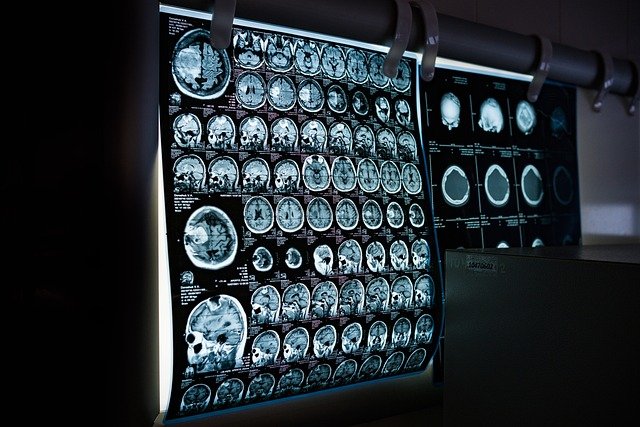Prostate Cancer Treatment Options: What You Might Want to Know
Receiving a prostate cancer diagnosis can be overwhelming, but understanding your treatment options is an essential step toward making informed decisions. Modern medicine offers various approaches to treating prostate cancer, ranging from active surveillance for slow-growing tumors to advanced surgical techniques and innovative therapies for more aggressive cases. This article explores the full spectrum of treatment options to help patients and their families navigate this challenging journey with greater confidence.

Prostate cancer remains one of the most common cancers affecting men worldwide, with treatment approaches varying widely depending on factors such as cancer stage, patient age, overall health, and personal preferences. The good news is that prostate cancer treatments have evolved significantly over the years, with newer options offering better outcomes and fewer side effects than ever before. Understanding these options can empower patients to participate actively in their treatment decisions.
Advancements in Prostate Cancer Treatments
The landscape of prostate cancer treatment has transformed dramatically in recent decades. Technological innovations have led to more precise diagnostic tools and targeted therapies that can effectively treat cancer while minimizing damage to surrounding healthy tissues. Robotic-assisted surgeries have revolutionized prostatectomy procedures, offering greater surgical precision and potentially faster recovery times compared to traditional open surgeries.
Radiation therapy has also seen significant advancements, with techniques like intensity-modulated radiation therapy (IMRT) and stereotactic body radiation therapy (SBRT) delivering more accurate radiation doses. These approaches can target cancer cells more precisely while sparing healthy tissue, potentially reducing side effects. Additionally, innovations in imaging technology allow for real-time monitoring during treatment, ensuring greater accuracy.
Genetic testing and biomarker analysis have opened doors to personalized treatment plans based on the specific characteristics of a patient’s cancer. These advancements help oncologists determine which patients might benefit from more aggressive treatments and which might be candidates for less invasive approaches, tailoring care to individual needs.
Localized Treatment Options
When prostate cancer is confined to the prostate gland, several localized treatment options may be considered. Radical prostatectomy—the surgical removal of the entire prostate gland and some surrounding tissue—remains a standard approach for many patients. This procedure can be performed using traditional open surgery, laparoscopic techniques, or robot-assisted methods, with the latter offering potential benefits in terms of precision and recovery time.
Radiation therapy provides another effective option for localized prostate cancer. External beam radiation therapy (EBRT) delivers radiation from outside the body, typically over several weeks of treatment sessions. Brachytherapy, another form of radiation therapy, involves placing radioactive seeds directly into the prostate tissue, delivering a higher dose of radiation to a more concentrated area while limiting exposure to surrounding tissues.
Newer focal therapies target only the cancerous portions of the prostate rather than treating the entire gland. These include cryotherapy (freezing cancer cells), high-intensity focused ultrasound (HIFU), and focal laser ablation. While still being evaluated in clinical settings, these approaches aim to treat cancer effectively while preserving urinary and sexual function by minimizing damage to healthy tissue.
Systemic and Alternative Therapies
For prostate cancer that has spread beyond the prostate gland, systemic treatments that target cancer throughout the body become necessary. Hormone therapy, also called androgen deprivation therapy (ADT), works by reducing levels of male hormones (androgens) that stimulate prostate cancer growth. This can be achieved through medications or, less commonly, through surgical removal of the testicles (orchiectomy).
Chemotherapy may be recommended when hormone therapy becomes ineffective or for particularly aggressive cancers. These powerful drugs target rapidly dividing cells throughout the body but can cause significant side effects. Newer chemotherapy regimens aim to balance effectiveness with quality of life considerations.
Immunotherapy represents an exciting frontier in prostate cancer treatment, harnessing the body’s immune system to fight cancer cells. Sipuleucel-T (Provenge) was the first FDA-approved immunotherapy for advanced prostate cancer, and ongoing research continues to explore additional immune-based approaches. Similarly, targeted therapies like PARP inhibitors show promise for patients with specific genetic mutations.
The Role of Monitoring and Observation
Not all prostate cancers require immediate treatment. For some patients, especially those with low-risk, slow-growing cancers or older men with limited life expectancy, active surveillance may be an appropriate approach. This involves regular monitoring through PSA tests, digital rectal exams, and periodic biopsies, with active treatment initiated only if the cancer shows signs of progression.
Watchful waiting represents a less intensive monitoring approach, typically recommended for older men or those with significant health issues. This strategy focuses on treating symptoms if they develop rather than conducting regular testing. Both approaches aim to avoid unnecessary treatment and potential side effects when the cancer poses minimal risk.
The decision between immediate treatment and observation strategies should be made collaboratively between patient and healthcare provider, considering factors like cancer aggressiveness, potential side effects of treatment, overall health status, and personal preferences regarding quality of life.
Managing Side Effects and Recovery
Treatment side effects remain a significant concern for many prostate cancer patients. Common issues include urinary incontinence, erectile dysfunction, bowel problems, and fatigue. The likelihood and severity of these side effects vary depending on the treatment approach, individual patient factors, and the expertise of the medical team.
Modern treatment protocols increasingly focus on function preservation and quality of life considerations. Pelvic floor physical therapy can help address urinary issues, while various medications and devices are available for erectile dysfunction. Nutritional support, exercise programs, and psychological counseling also play important roles in comprehensive cancer care.
Recovery timelines vary significantly based on treatment type and individual factors. Surgical recovery typically takes several weeks, while adaptation to hormone therapy may involve ongoing management of side effects. Open communication with healthcare providers about side effects and recovery expectations is essential for optimal outcomes.
Integrating Complementary Approaches
While conventional medical treatments form the backbone of prostate cancer care, many patients also explore complementary approaches to manage symptoms and improve overall well-being. Evidence suggests that regular exercise can help reduce treatment side effects, improve energy levels, and potentially enhance treatment outcomes. Nutritional interventions, particularly diets rich in fruits, vegetables, and whole grains while limiting red meat and processed foods, may support overall health during treatment.
Stress reduction techniques such as meditation, yoga, and guided imagery can help manage the psychological impact of cancer diagnosis and treatment. Support groups, whether in-person or online, provide valuable emotional support and practical advice from others experiencing similar challenges. These complementary approaches should be discussed with healthcare providers to ensure they integrate safely with medical treatments.
This article is for informational purposes only and should not be considered medical advice. Please consult a qualified healthcare professional for personalized guidance and treatment.




